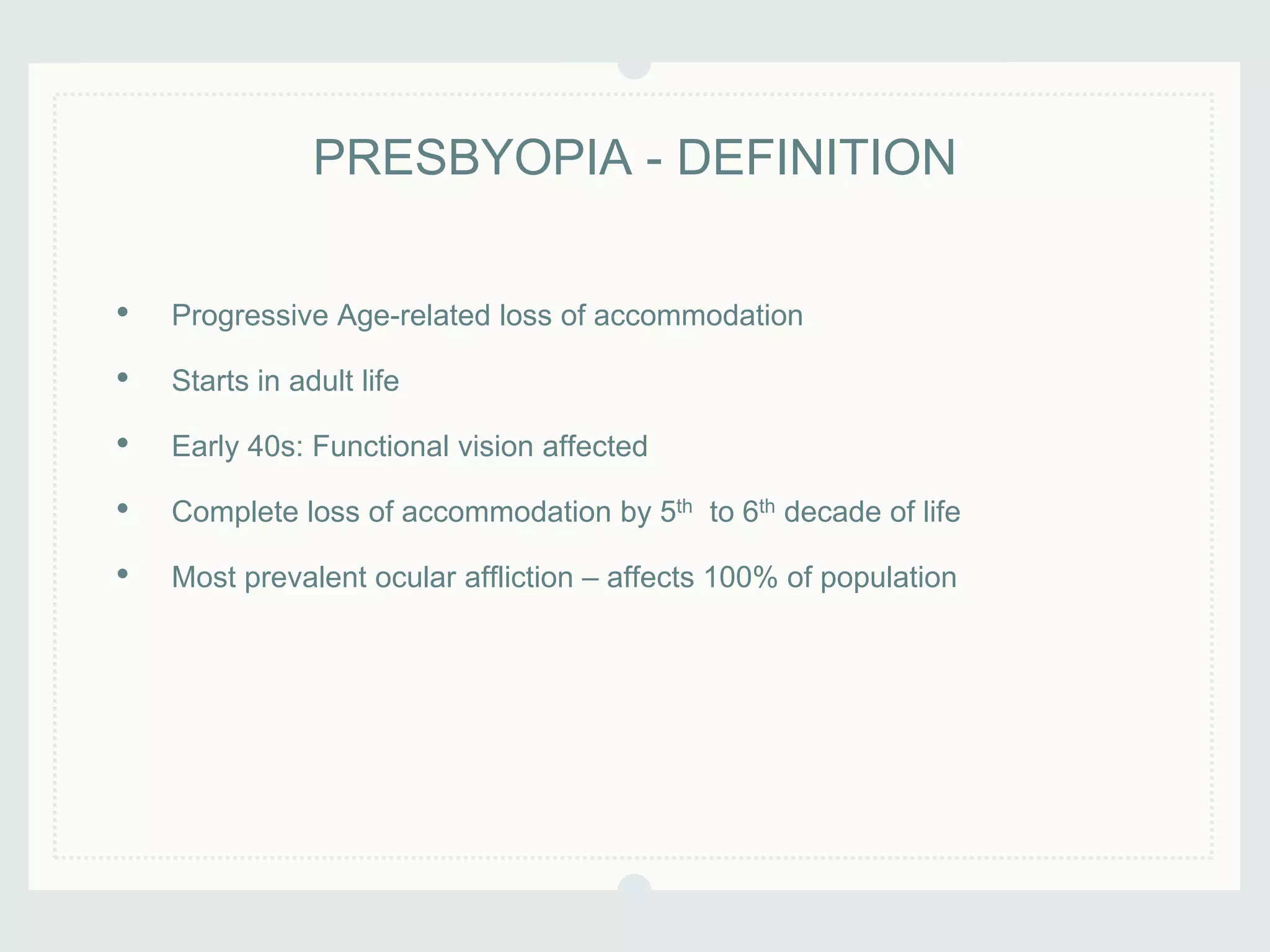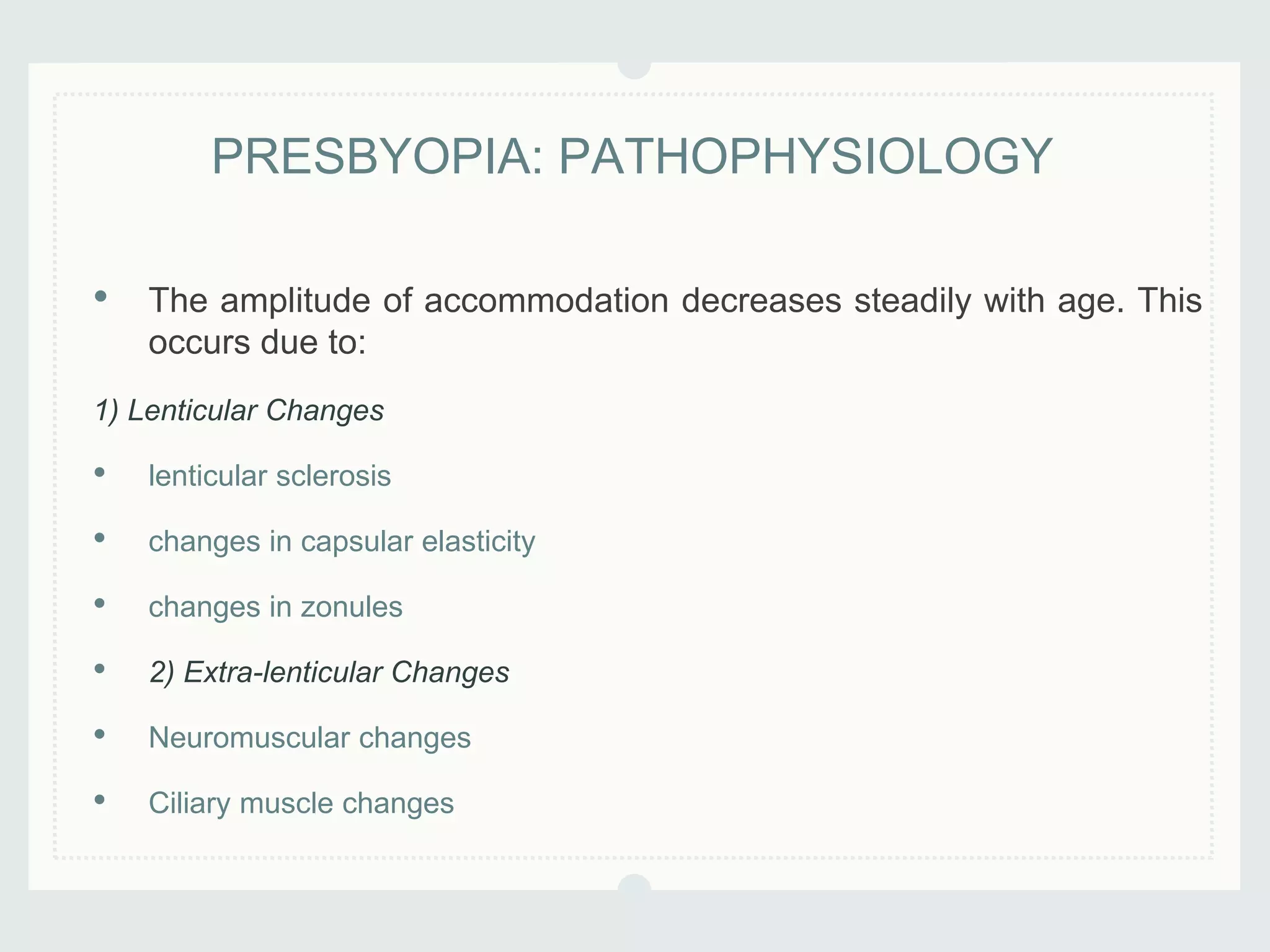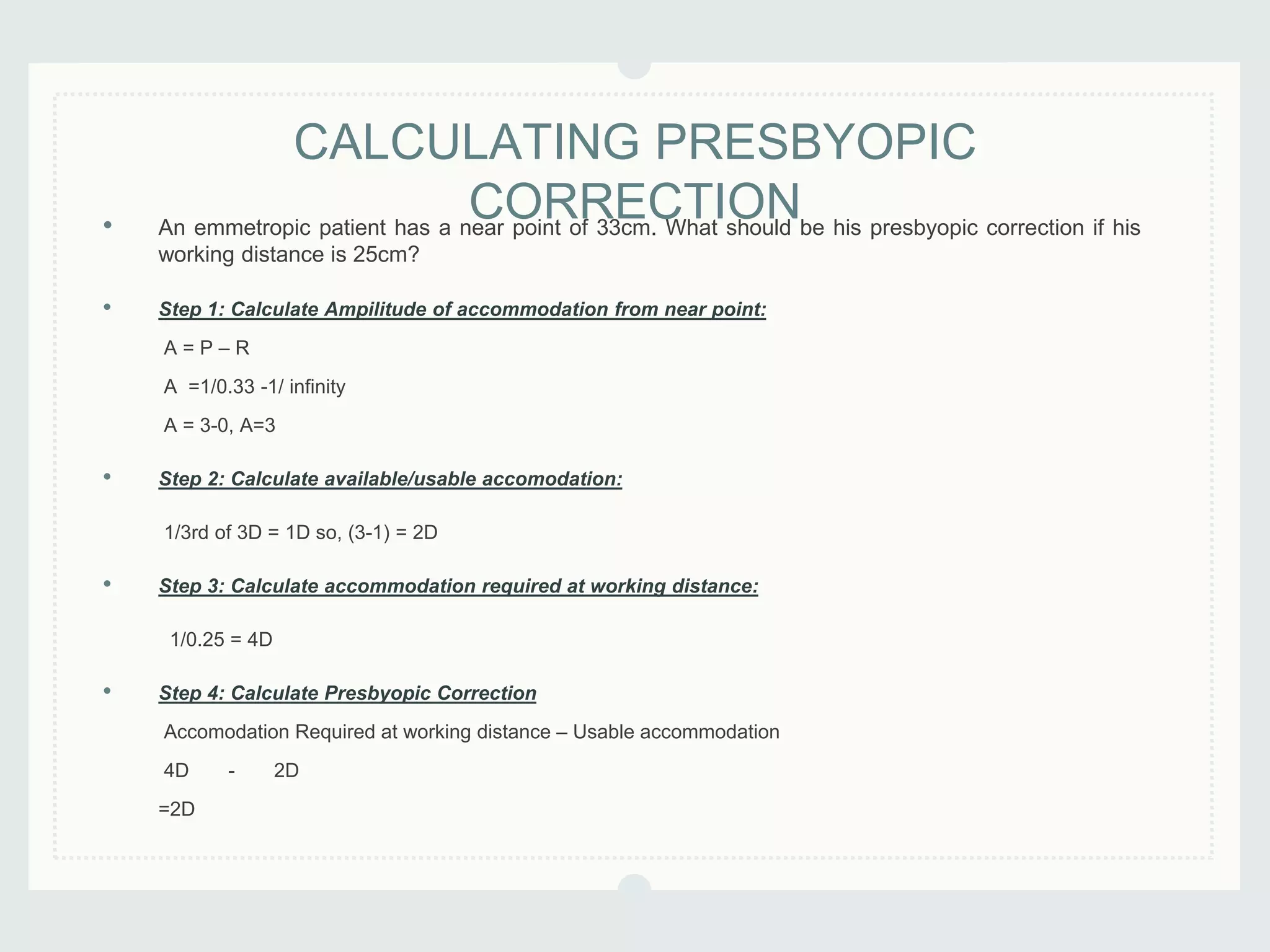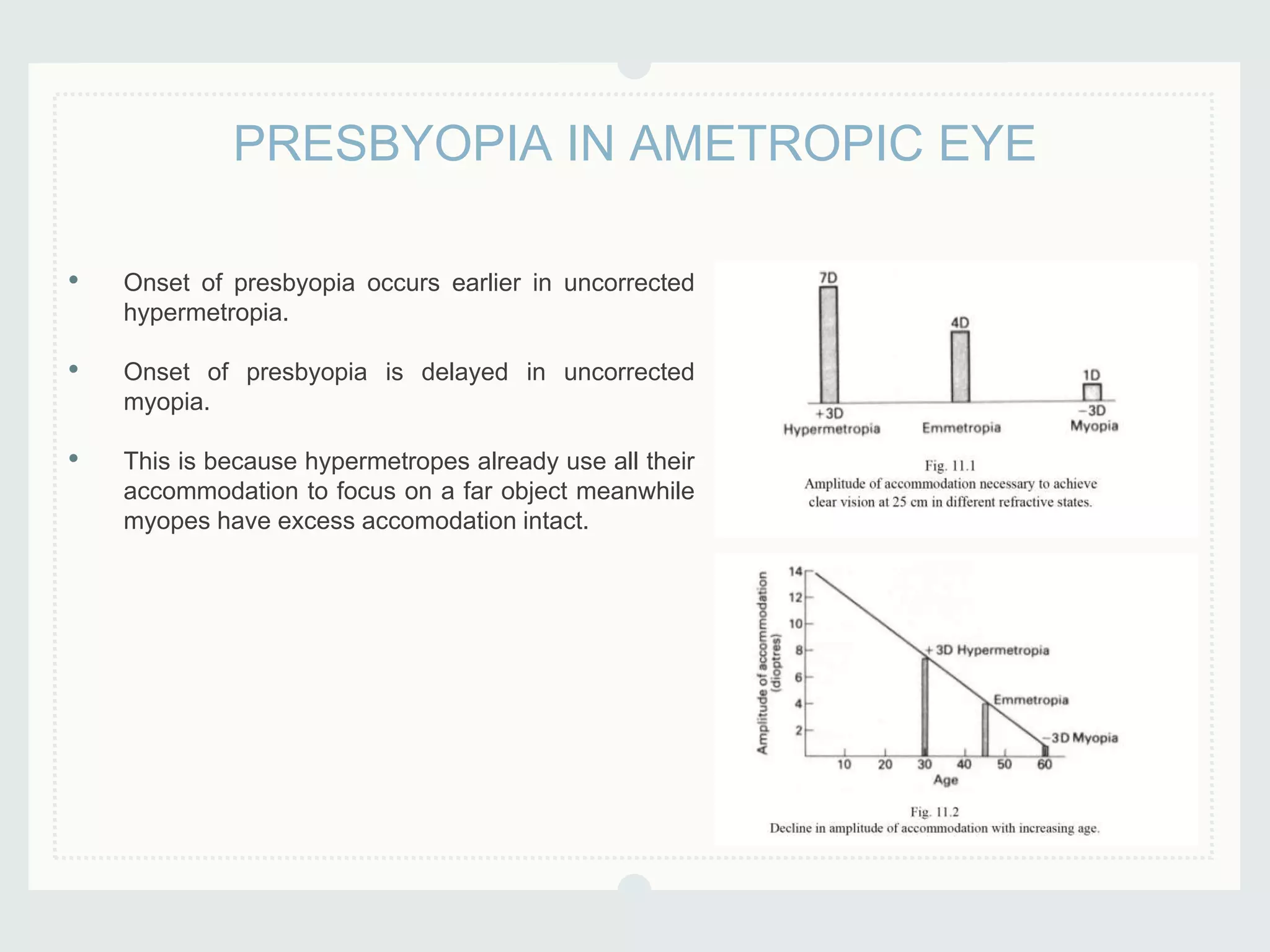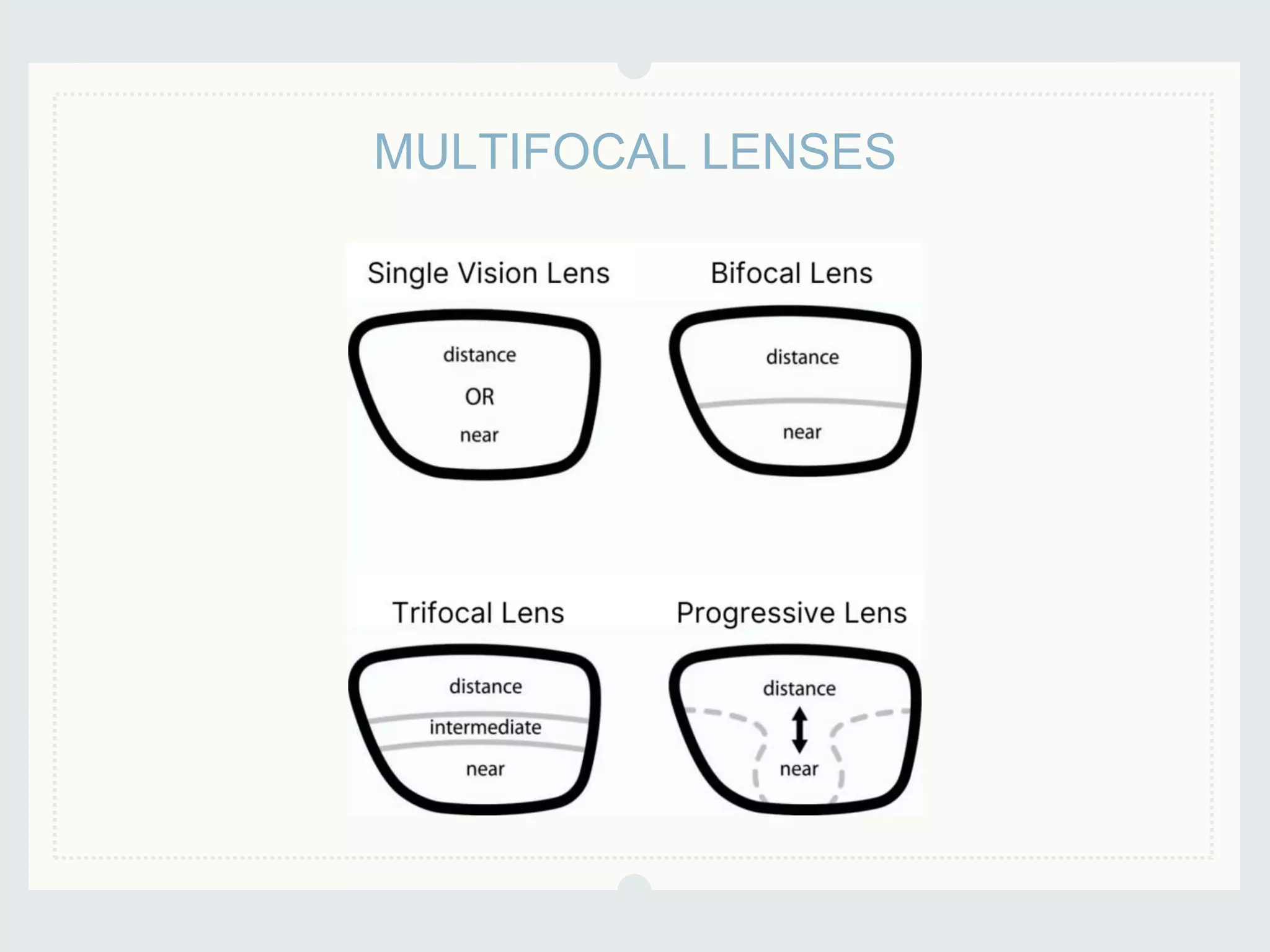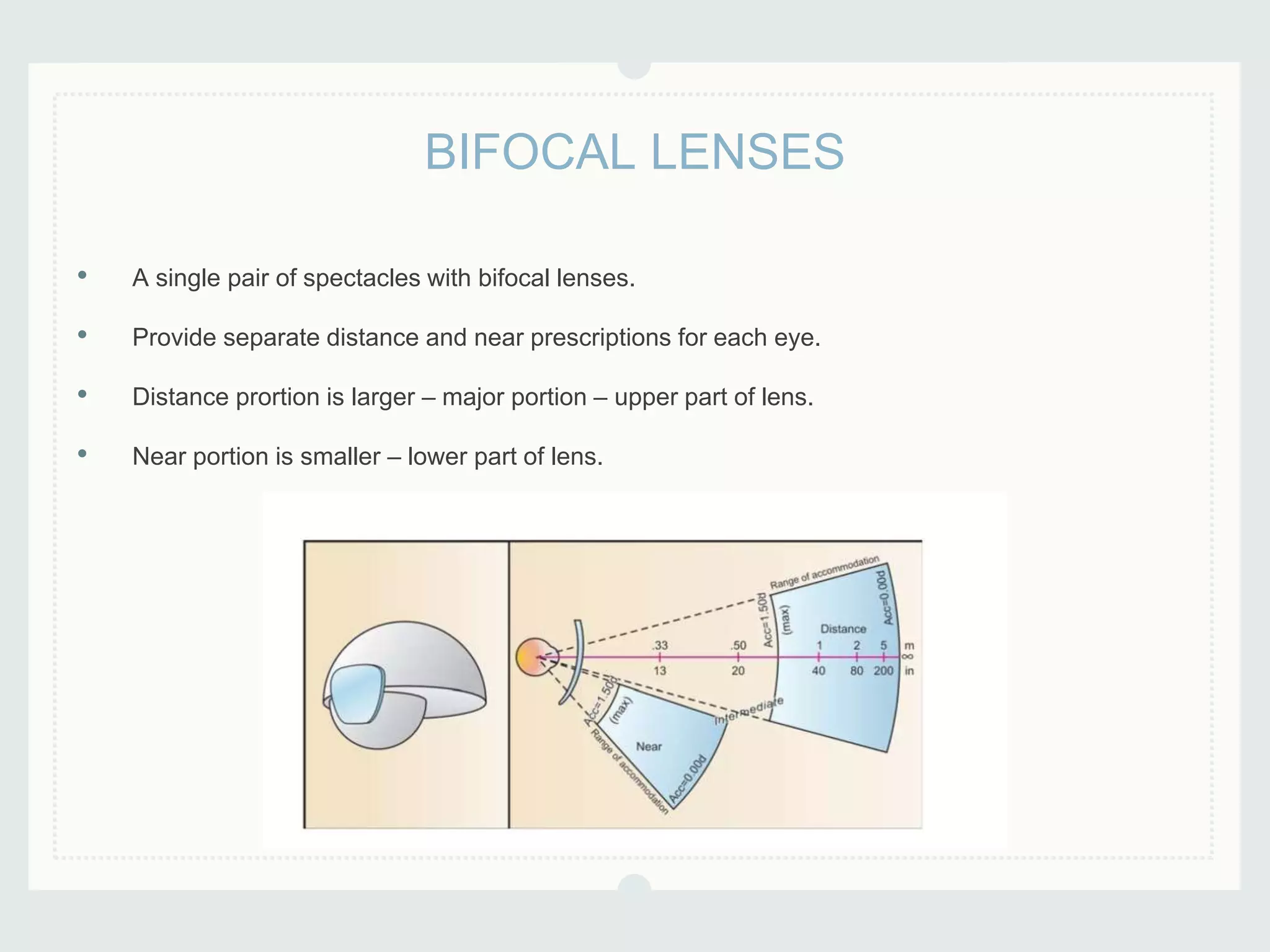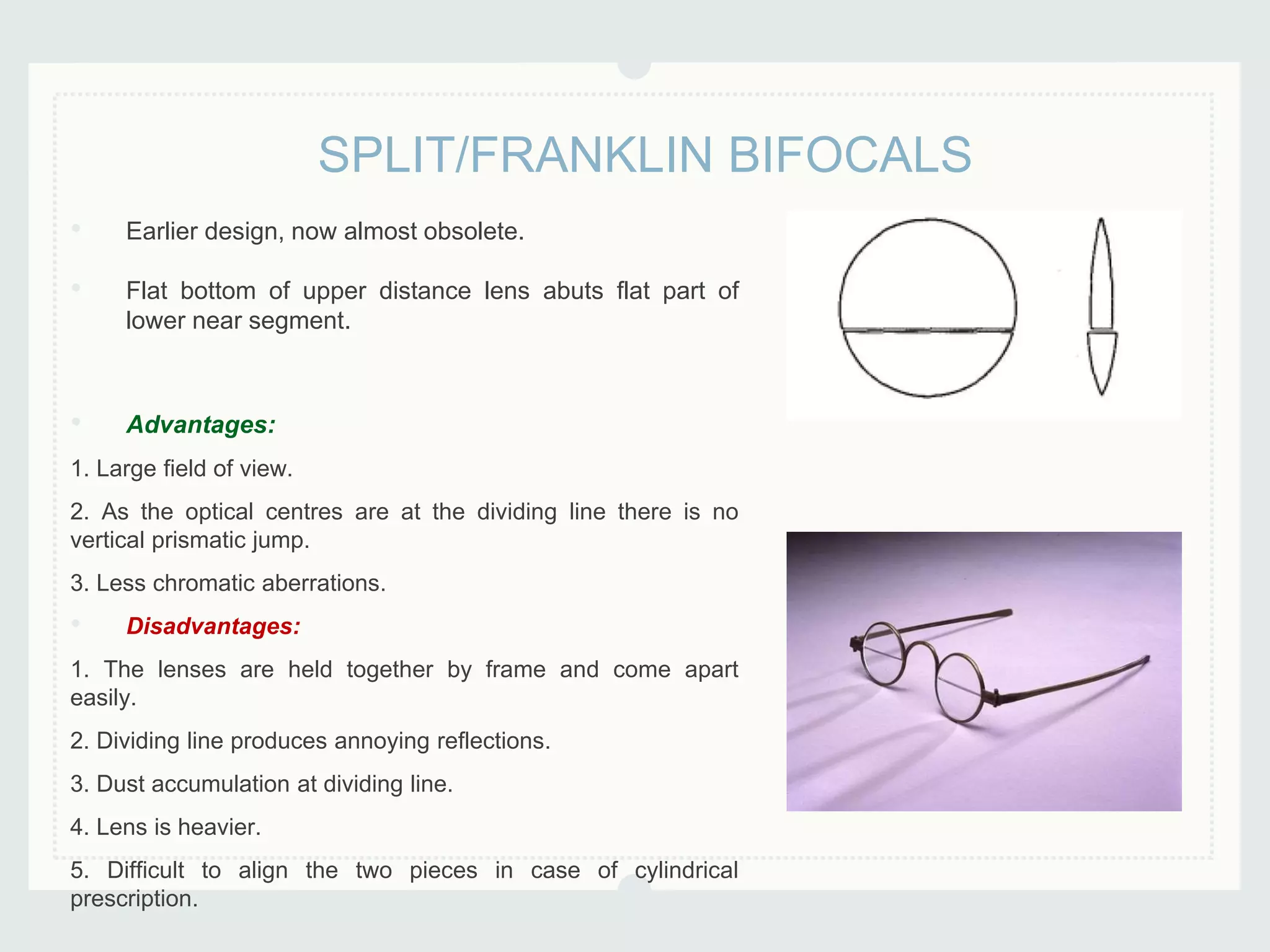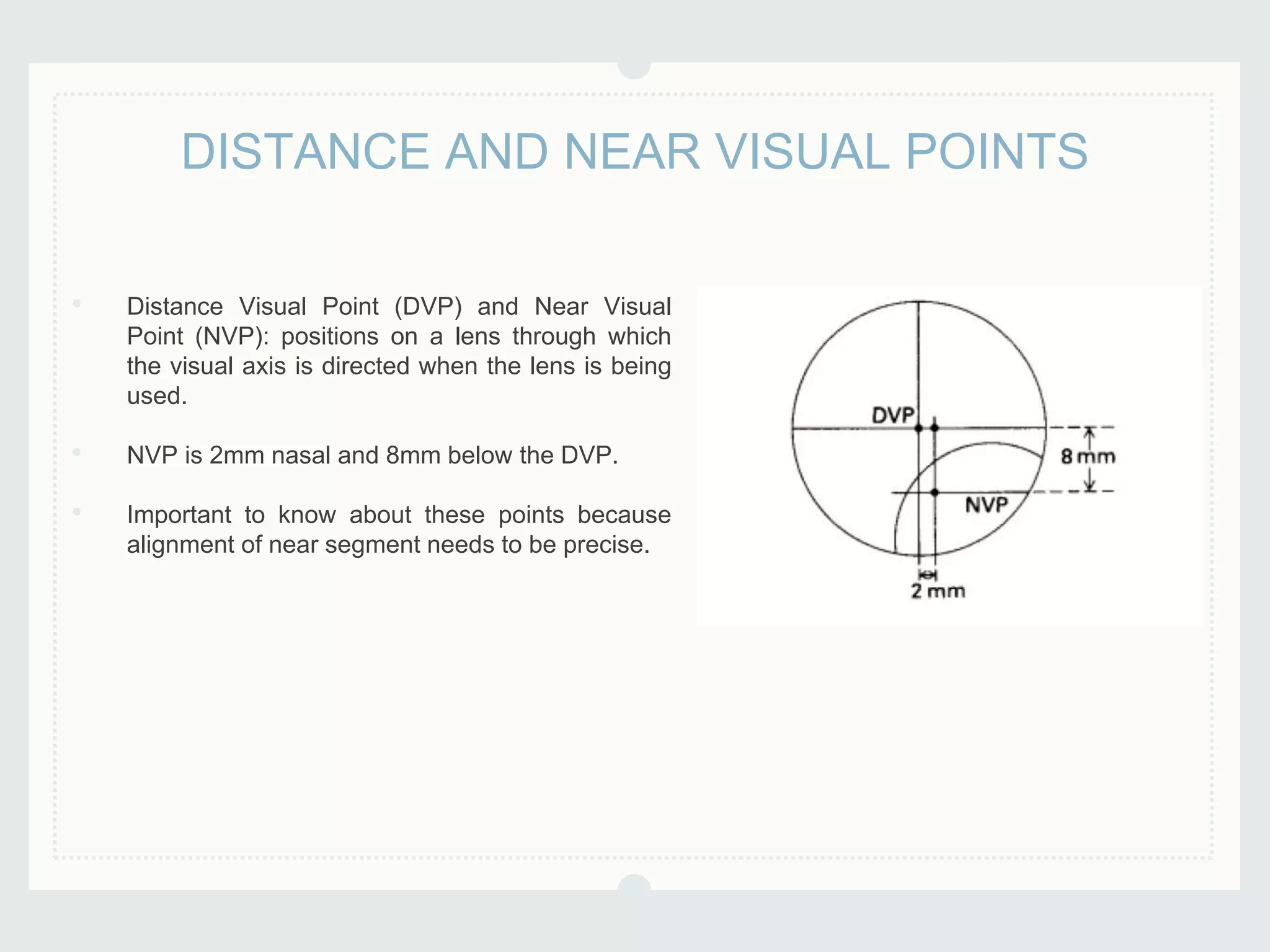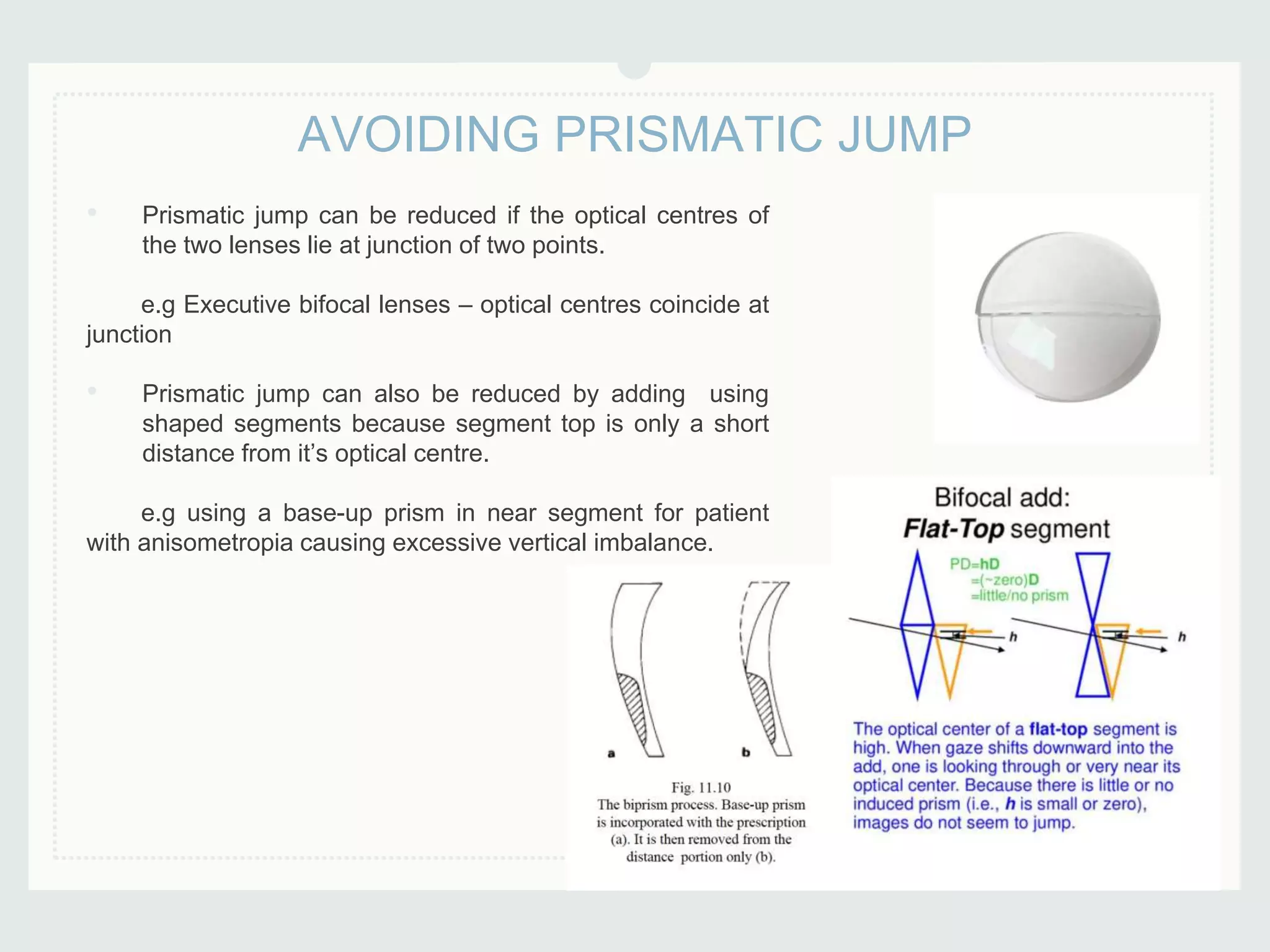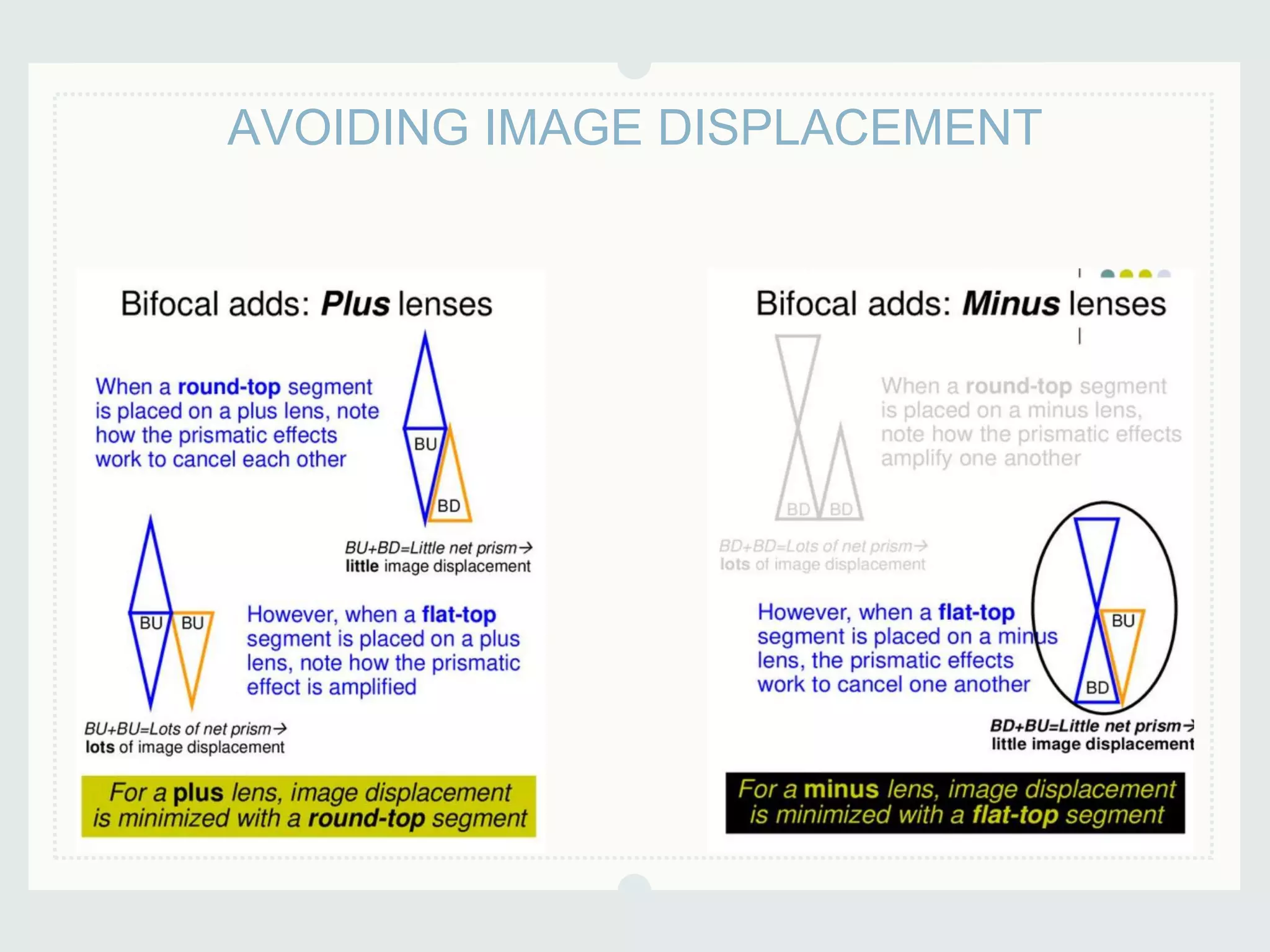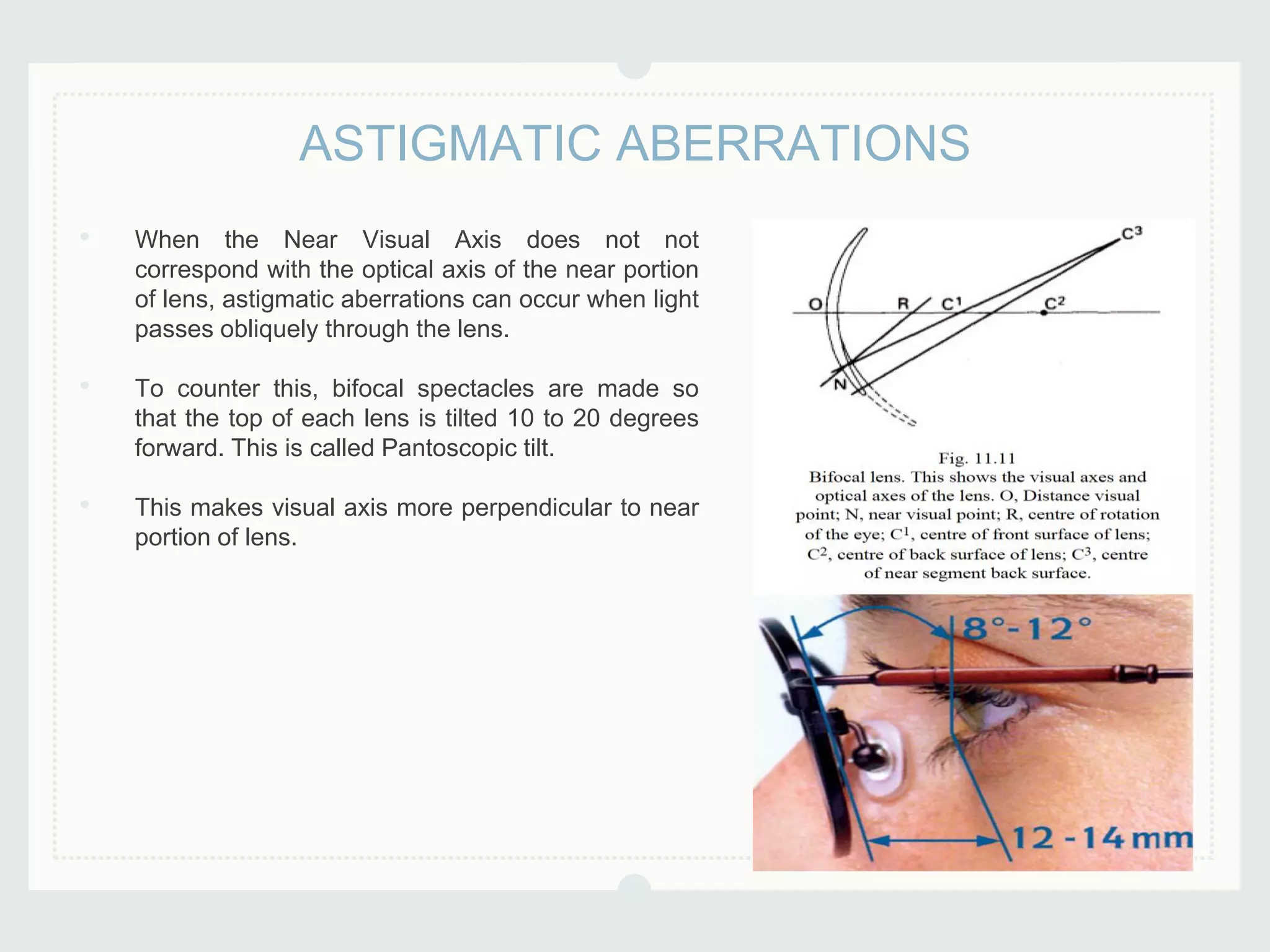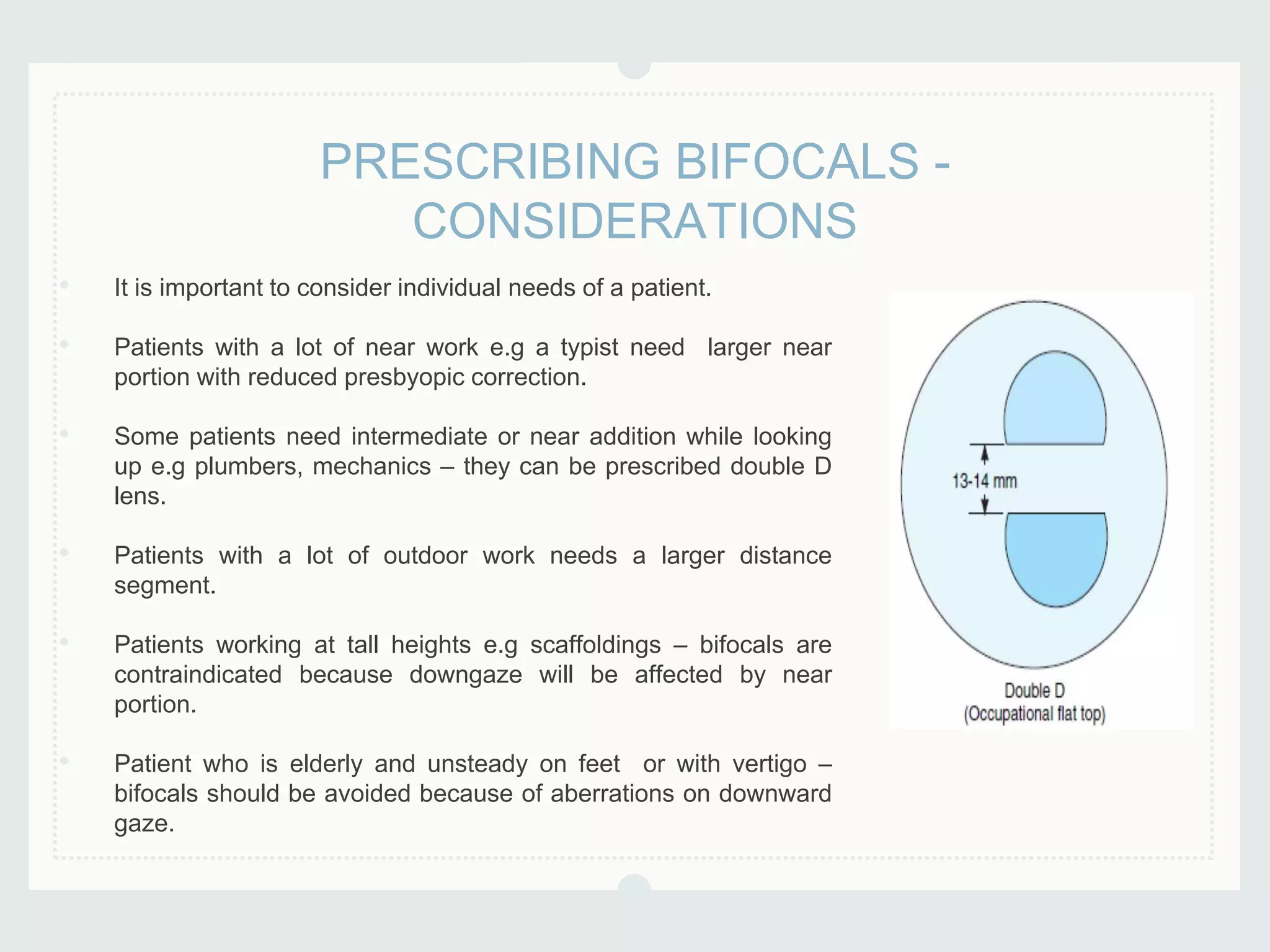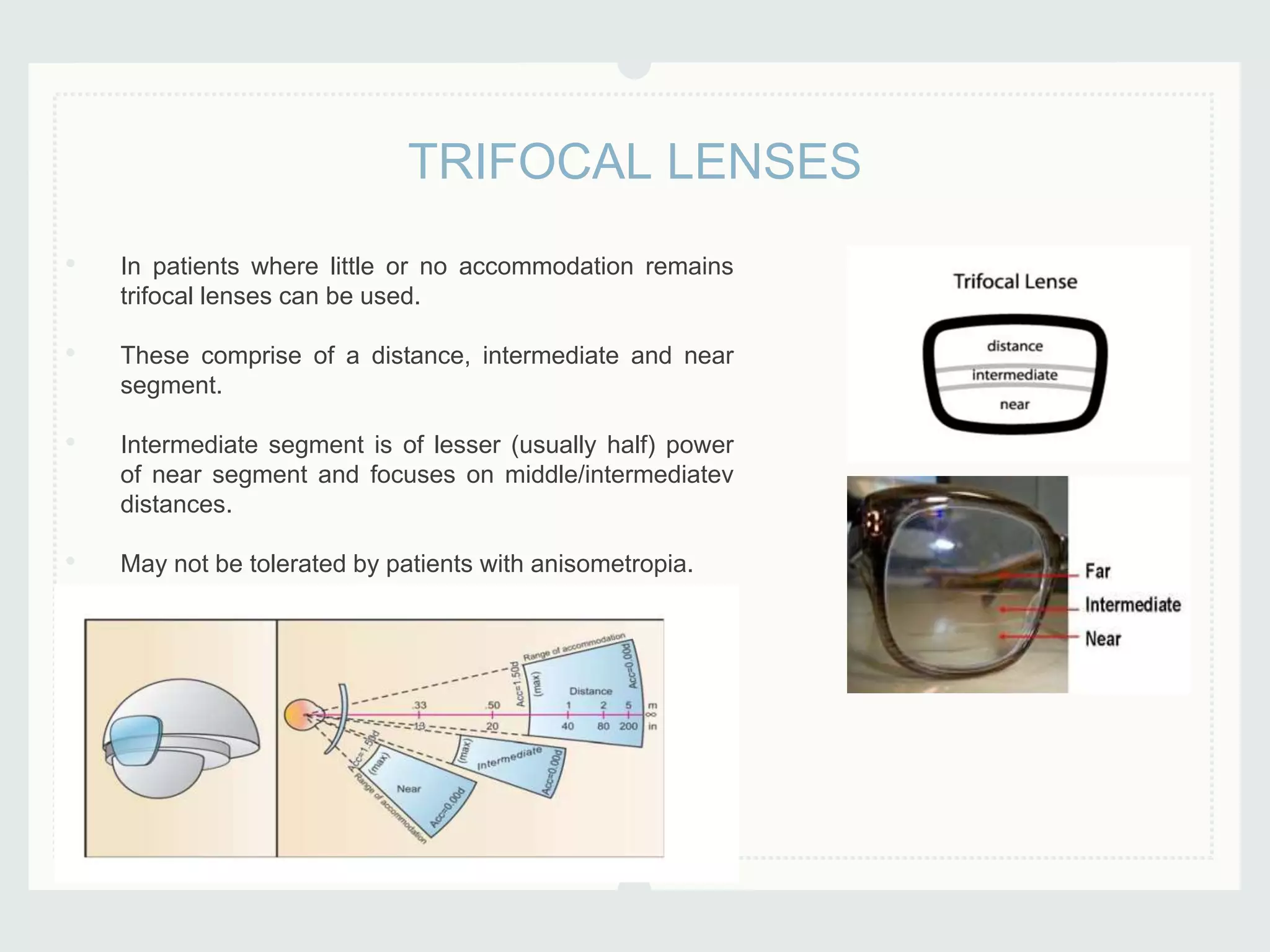1. The document discusses presbyopia, which is the age-related loss of accommodation that begins around the age of 40 and leads to difficulty with near vision.
2. It defines presbyopia and explains the physiological changes that cause it, including lenticular and extra-lenticular changes.
3. Various types of multifocal lenses are described that can help with presbyopia, including bifocal, trifocal, and progressive addition lenses, along with their advantages and disadvantages. Precise fitting of these lenses is important to reduce issues like prismatic effects and distortions.

